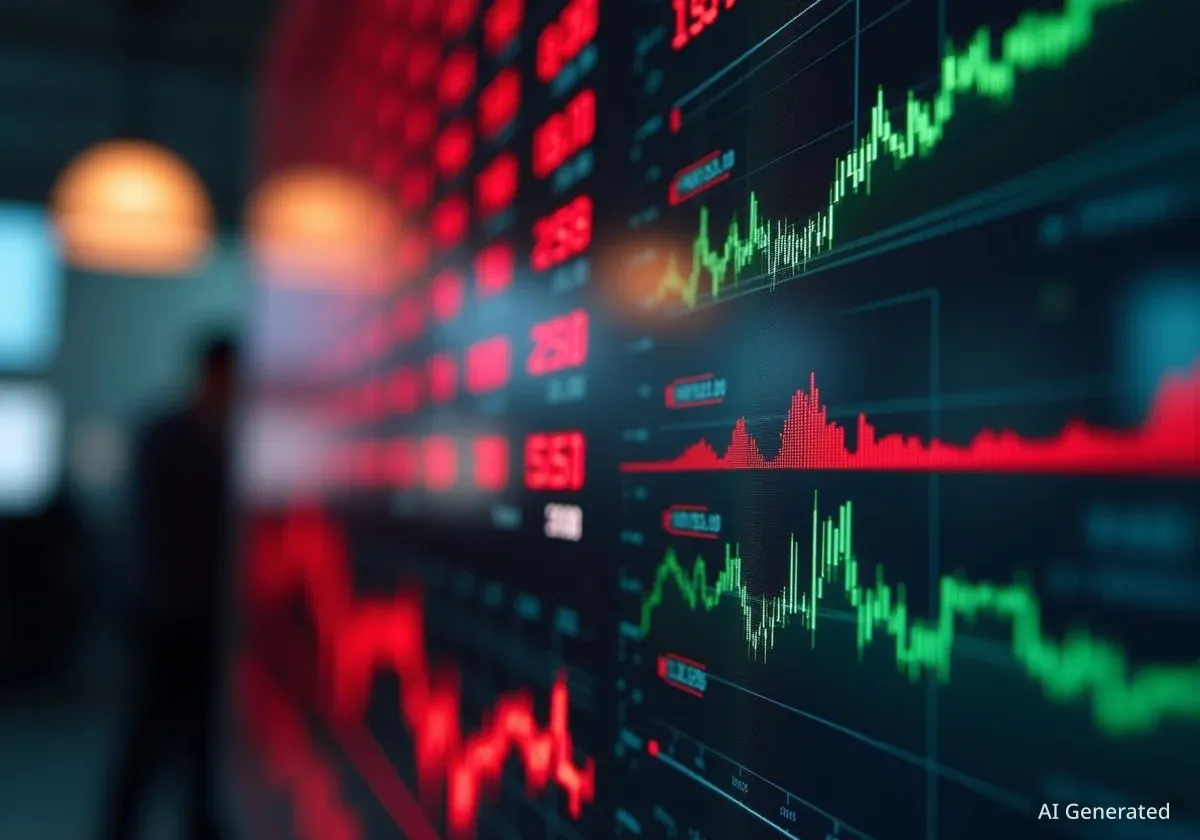Investors are navigating a landscape of heightened uncertainty as mixed economic signals and a hawkish Federal Reserve create significant volatility across major asset classes. While the Fed has signaled an end to its quantitative tightening program, persistent inflation and a surprisingly strong labor market are forcing a reevaluation of future interest rate cuts, impacting everything from precious metals to cryptocurrencies.
This complex environment, marked by fears of stagflation, has left gold holding firm despite headwinds, while silver faces critical technical levels. Meanwhile, the digital asset space, led by Bitcoin and XRP, is experiencing bearish pressure as investors shy away from risk.
Key Takeaways
- The Federal Reserve's hawkish stance is creating uncertainty, despite the conclusion of its quantitative tightening program.
- Stronger-than-expected labor market data is pushing back expectations for imminent interest rate cuts.
- Gold is showing resilience, holding its ground as a safe-haven asset, while silver's price action points to a potential breakout or sell-off.
- Cryptocurrencies like Bitcoin and XRP are facing downward pressure amid a risk-off sentiment and regulatory delays.
The Federal Reserve's Policy Puzzle
The central bank is currently walking a difficult tightrope. On one hand, the decision to end its quantitative tightening (QT) program injects some liquidity back into the financial system, which is typically supportive of asset prices. This move is seen by some as a measure to prevent financial instability as cracks in liquidity begin to appear.
However, this dovish signal is being overshadowed by persistent hawkish rhetoric from Fed officials. The primary concern remains inflation, which has not cooled as quickly as policymakers would like. This has led to a consistent message: interest rates will remain higher for longer until there is conclusive evidence that inflation is under control.
Stagflation Fears Emerge
The current economic climate has revived concerns about stagflation—a challenging combination of stagnant economic growth, high unemployment, and high inflation. While the labor market remains strong for now, other indicators suggest a potential slowdown, putting the Fed in a difficult position where fighting inflation could further harm economic growth.
Recent economic data has only added to the complexity. A hot Automatic Data Processing (ADP) employment report showed stronger private sector job growth than anticipated. This kind of data suggests the economy is still running hot, giving the Federal Reserve more reason to delay any potential rate cuts and maintain its restrictive monetary policy.
Precious Metals: A Tale of Two Markets
In this environment of uncertainty, precious metals are behaving in distinct ways. Gold, the traditional safe-haven asset, has demonstrated notable resilience. Despite the pressure from a strong U.S. dollar and the prospect of sustained high interest rates, gold prices have held firm. Investors appear to be valuing its role as a store of value amid growing geopolitical risks and concerns about the long-term economic outlook.
The strength in the labor market, however, does present a headwind. A robust economy reduces the immediate need for the Fed to cut rates, which typically weighs on non-yielding assets like gold. Analysts are closely watching key technical levels, with some suggesting that continued economic strength could push gold to test lower support zones.
Silver at a Critical Juncture
Silver's market position appears more precarious. The white metal is currently trading within a pivotal range that could dictate its direction for the near future. Analysts have identified a key price zone between $50.02 and $51.07 as a critical battleground.
A decisive breakout above this range could signal renewed bullish momentum, potentially opening the door for further gains. Conversely, a failure to breach this resistance could trigger a wave of selling, indicating that bears are regaining control of the market.
Silver's dual role as both a precious metal and an industrial commodity makes it particularly sensitive to economic growth expectations. Fears of a slowdown could dampen industrial demand, while its monetary characteristics could see it benefit from a flight to safety.
Cryptocurrencies Feel the Chill
The risk-off sentiment driven by the Fed's hawkish stance has sent a chill through the cryptocurrency market. Digital assets, which are typically considered high-risk investments, have struggled to gain traction in recent weeks.
Bitcoin, the market leader, is exhibiting bearish tendencies. The prospect of sustained high interest rates makes holding non-yielding digital assets less attractive compared to traditional financial instruments like government bonds, which now offer competitive returns with significantly less risk. The overall market sentiment is cautious, with investors wary of deploying capital into volatile assets until there is greater clarity on the Fed's path forward.
Regulatory Hurdles for XRP
For specific altcoins like XRP, market-wide economic pressures are compounded by regulatory headwinds. Delays in the approval of a spot XRP exchange-traded fund (ETF) in the United States have weighed on investor sentiment. While some analysts maintain a bullish long-term outlook for the asset, the immediate future is clouded by both macroeconomic uncertainty and the slow pace of regulatory progress.
The broader crypto market is now looking for a catalyst. Without a significant shift in Fed policy or a major positive development, digital assets may continue to trade sideways or face further downward pressure as investors prioritize capital preservation.
Natural Gas Shows Surprising Strength
In contrast to the uncertainty in other markets, natural gas has found support from fundamental factors. Colder weather forecasts and robust demand for Liquefied Natural Gas (LNG) have provided a boost to prices. Traders are now eyeing the 52-week average as a potential target, suggesting that near-term fundamentals are currently outweighing broader macroeconomic concerns for this specific commodity.
This divergence highlights how different asset classes are reacting to the current economic environment. While monetary policy is a dominant theme, specific supply and demand dynamics can still drive significant price movements in individual commodity markets.





